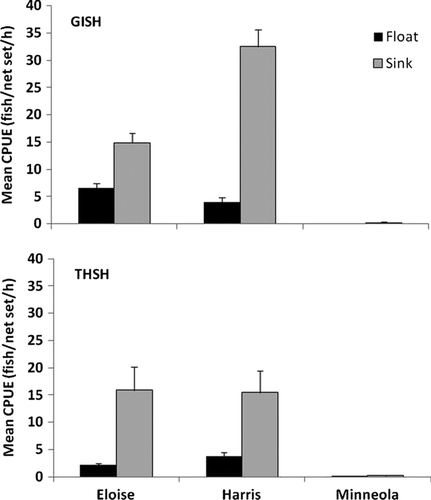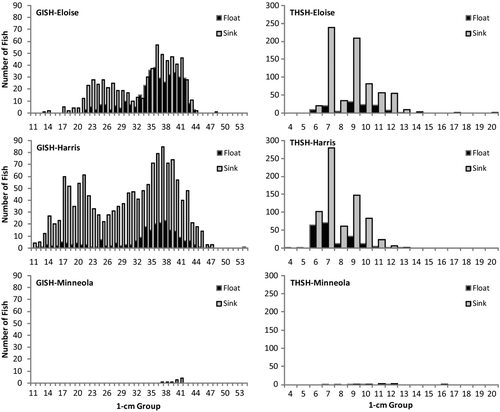Figures & data
Table 1 Long-term averages of Secchi depth (m), chlorophyll a concentration (μg/L), total nitrogen concentration (μg/L) and total phosphorus concentration (μg/L) for the 3 study lakes. The estimated lake-wide coverage of aquatic plants (%) and average depth (m) are also provided. All data were collected and reported by Florida LAKEWATCH (2008, 2009).
Table 2 Adjusted mean catch rate (fish/net set/h; standard error in parentheses), coefficient of variation (CV), and minimum (MIN) and maximum (MAX) sizes of gizzard shad and threadfin shad collected in experimental gill net sets. Floating catch rates were adjusted by dividing raw values by 1.33.
Figure 1 Adjusted mean catch rates (CPUE) with standard error bars for gizzard shad (GISH) and threadfin shad (THSH) collected using floating (black bars) and sinking (gray bars) experimental gill nets at lakes Eloise, Harris, and Minneola in winter 2007–2008. Floating catch rates were adjusted by dividing raw values by 1.33.

Figure 2 Length-frequency distributions for gizzard and threadfin shad collected by floating (black bars) and sinking (gray bars) experimental gill nets at lakes Eloise, Harris and Minneola, Florida from December 2007 to March 2008.
